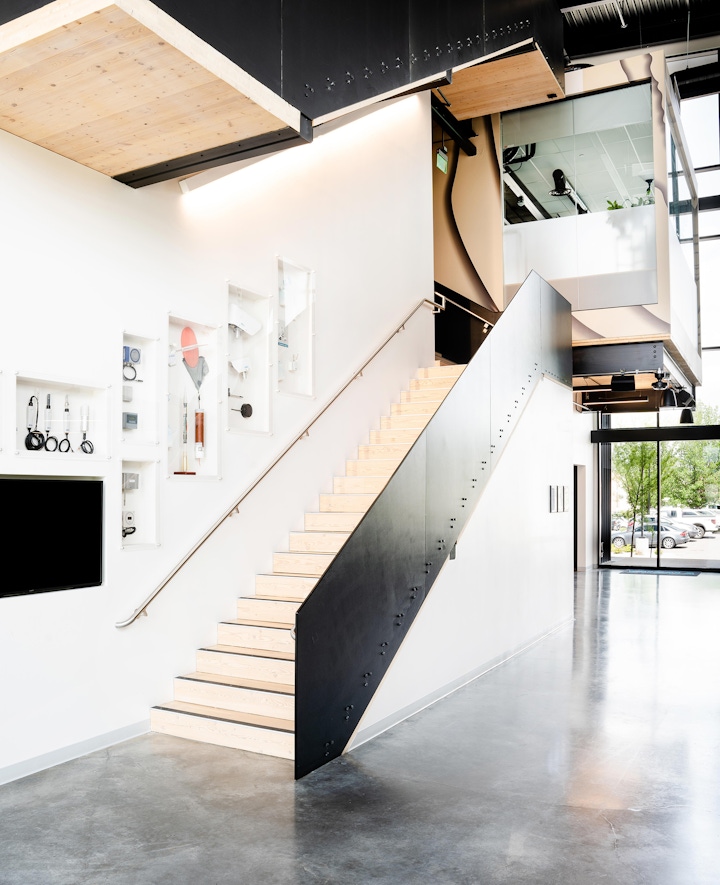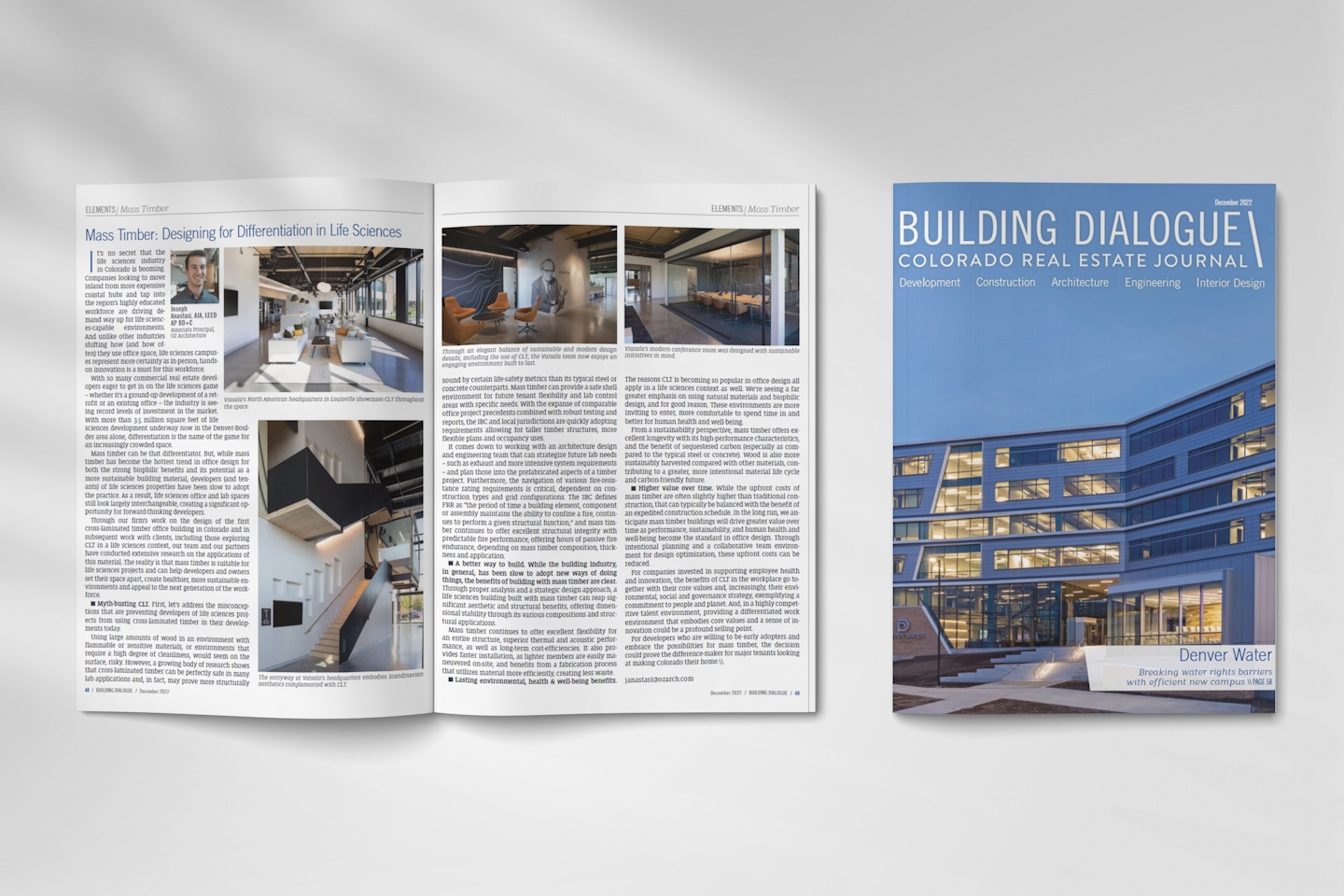It’s no secret that the life sciences industry in Colorado is booming. Companies looking to move inland from more expensive coastal hubs and tap into the region’s highly educated workforce are driving demand for life sciences-capable environments way up. And unlike other industries shifting how (and how often) they use office space, life sciences campuses represent more certainty as in-person; hands-on innovation is a must for this workforce.


With more than 3.5 million square feet of life sciences development underway now in the Denver/Boulder area alone, differentiation is the name of the game in this increasingly crowded space. Mass timber has the potential to be that differentiator.
But, while mass timber has become the hottest trend in office design for both the strong biophilic benefits and its potential as a more sustainable building material, developers (and tenants) of life sciences properties have been slow to adopt the practice. As a result, life sciences office and lab spaces still look largely interchangeable, creating a significant opportunity for forward-looking developers.
In the most recent issue of Building Dialogue, OZ Architecture Associate Principal Joe Anastasi busts some of the prevailing myths preventing developers and owners from considering mass timber for life sciences and helps us rethink the possibilities for future applications. Click here to check it out.
